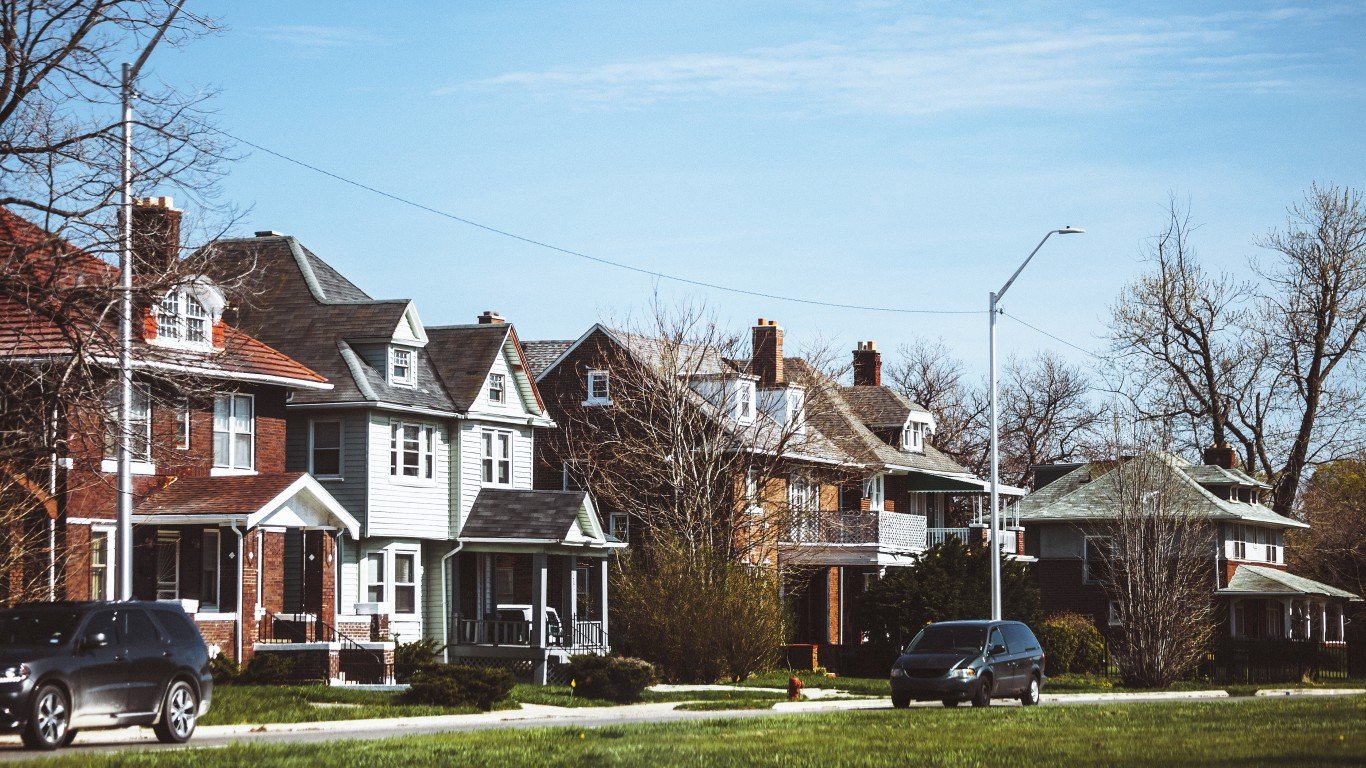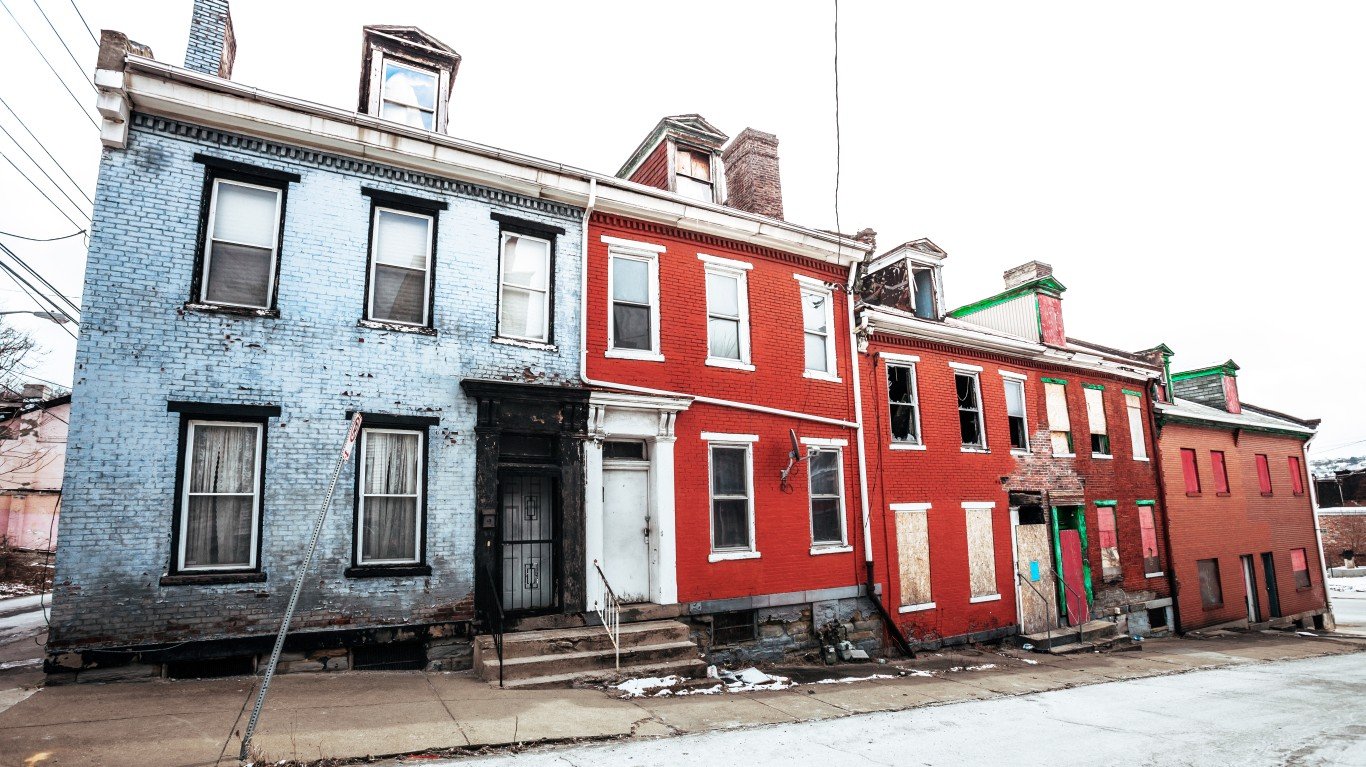

The Federal National Mortgage Association, better known as Fannie Mae (FNMA), is one of several U.S. government-sponsored enterprises (GSEs) that has been supervised and regulated by the Federal Housing Finance Agency (FHFA) since the housing market crash.
The agency, along the Federal Home Loan Mortgage Corporation, aka Freddie Mac (FMCC), was placed under FHFA conservatorship in 2008 following an injection of $190 billion in bailout funds to keep the two GSEs from failing. Since being placed into conservatorship, the two GSEs have returned more than $300 billion in dividend payments to the U.S. Treasury.
About 20% of Fannie Mae stock trades over-the-counter and the remaining 80% of preferred stock is owned by the federal government. Last September, the Trump administration announced a three-pronged plan to overhaul Fannie Mae and Freddie Mac following a March order from the president. In October, the FHFA announced a more detailed strategic plan for the two agencies, which together hold about a third of the country’s nearly $16 trillion in mortgage debt.
The strategic plan for Fannie and Freddie includes three main objectives. First is fostering national housing finance markets that support sustainable homeownership and affordable rental housing. Second is operating in a safe and sound manner, and third, preparing for their eventual exits from the conservatorships.
For investors, the administration’s plan for exiting conservatorship is the most interesting and important part. There are three parts to the plan. First, return Fannie and Freddie to private control after recapitalizing them. Then create an explicit federal guarantee of the mortgage-backed securities issued by the two GSEs. And, finally, create more private companies to compete with Fannie and Freddie for mortgage purchases.
Returning Fannie and Freddie to private control means holding initial public offerings (IPOs) that could raise as much as $200 billion, putting the recent, world’s largest-ever IPO of Saudi Aramco in the shade. The Saudi national oil company raised $25.6 billion in a recent offering of 1.5% of the company on the Saudi Tadawul exchange.
The IPO Process Has Begun
In December, Fox News reported that the FHFA was interviewing potential advisors for an IPO of the two GSEs. Last week, the agency announced that it had hired Houlihan Lokey Capital “as a financial advisor to assist in the development and implementation of a roadmap to responsibly end the conservatorships of Fannie Mae and Freddie Mac.”
The contract pays Houlihan Lokey $9 million in the first year and may be extended for four and a half more years with a total payment of $45 million. Last November, FHFA director Mark Calabria said that an IPO could be completed in 2021 or 2022 “if all is going well.”
Technically, of course, an offering of shares in Fannie and Freddie is not an IPO. Fannie began trading on the New York Stock Exchange in 1968 and Freddie started trading in 1989. Both were kicked out when their share prices dropped below a dollar following their conservatorship.
Now, for the Politics of Recapitalization
A major contributor to the collapse of Fannie and Freddie in 2008 was an expectation that the federal government would backstop any fool thing the GSEs did. Investors always believed that, but the agency’s management, which knew better, also decided that the GSEs were not profiting enough from the housing boom. Fannie and Freddie assumed more credit insurance risk transfer by buying mortgage-backed securities that were stuffed full of risky loans.
As it turns out, when push came to shove during the housing crisis, investors and GSE management were proved right. The current administration believes that making the guarantee explicit may be required. Therefore, the federal government would extend a federal guarantee to any other FHFA-approved guarantors of collateralized mortgage-backed securities.
Recapitalizing Fannie Mae Is Not Straightforward
One item on the FHFA’s checklist ahead of an IPO is contracting with investment banks willing to underwrite the share offering. For a sale of this size, it’s not far-fetched to assume that a couple dozen banks will be lined up. That should be the easy part.
An especially tricky bit is what some big investors in Fannie Mae will want. Investment management firm Capital Group owns more than 11% of the outstanding shares, valued at more than $420 million at a recent price around $3.50 a share.
Fannie could recapitalize itself, but that could take another decade. The Trump administration doesn’t want to wait, so that leaves fronting more federal funds to Fannie, taking the GSE private or having a public stock offering.
Spending more federal dollars to prop up an institution that the administration doesn’t particularly care for is a nonstarter. Finding a firm or consortium that could and would put up $200 billion also may be a nonstarter. That leaves a public sale of stock.
That means paying Capital Group and other existing shareholders handsomely or wasting more years in legal wrangling.
Before that happens, the U.S. Senate and the House of Representatives will have to agree on what role the GSEs play in the U.S. housing market. Democrats, who control the House, want the companies to increase the number of less-wealthy borrowers who want to buy homes. Republicans, who control the Senate, generally resist affordable-housing policies, and some want the federal government out of the mortgage market altogether.
The big reason that the GSEs remain under the Treasury’s thumb nearly 12 years after being put there: only Congress can create an explicit government guarantee for Fannie Mae and Freddie Mac bonds.
Opening the Market to Private Companies
Once plans are finalized to recapitalize the GSEs and explicitly to guarantee their bonds, the third part of the administration’s plan would involve extending that guarantee to private firms that want to compete with Fannie and Freddie.
Creating more competitors in the secondary mortgage market would have “several compelling benefits” according to the Treasury’s September report. Among these benefits is helping protect taxpayers against bailing Fannie and Freddie out of the soup again. Another is leveling the playing field for private competitors by guaranteeing private sector loans as well as GSE loans (subsidies on loans would be passed through to borrowers rather than shareholders). Promoting innovation in the mortgage lending business is a benefit too.
One thing that should be clear is that whatever happens with Fannie and Freddie won’t happen this year. If Congress couldn’t agree on a path forward during the past decade, chances that it will suddenly agree on a course of action are essentially zero. The FHFA still has to find underwriters and figure out how much Fannie Mae stock it can sell to investors.
Also, those investors are going to want more than the vague notions about how the GSEs should be regulated and whether they can survive private competition.
At its peak, Fannie Mae stock traded at nearly $90 a share. Returning to even half that level would return more than 10 times the cost of a share today. A recent note from Nomura/Instinet even recommends the near-term prospects of Fannie and Freddie. In mid-2011, however, shares traded at about one-tenth their value today.
Sponsored: Want to Retire Early? Here’s a Great First Step
Want retirement to come a few years earlier than you’d planned? Or are you ready to retire now, but want an extra set of eyes on your finances?
Now you can speak with up to 3 financial experts in your area for FREE. By simply clicking here you can begin to match with financial professionals who can help you build your plan to retire early. And the best part? The first conversation with them is free.
Click here to match with up to 3 financial pros who would be excited to help you make financial decisions.
Thank you for reading! Have some feedback for us?
Contact the 24/7 Wall St. editorial team.



